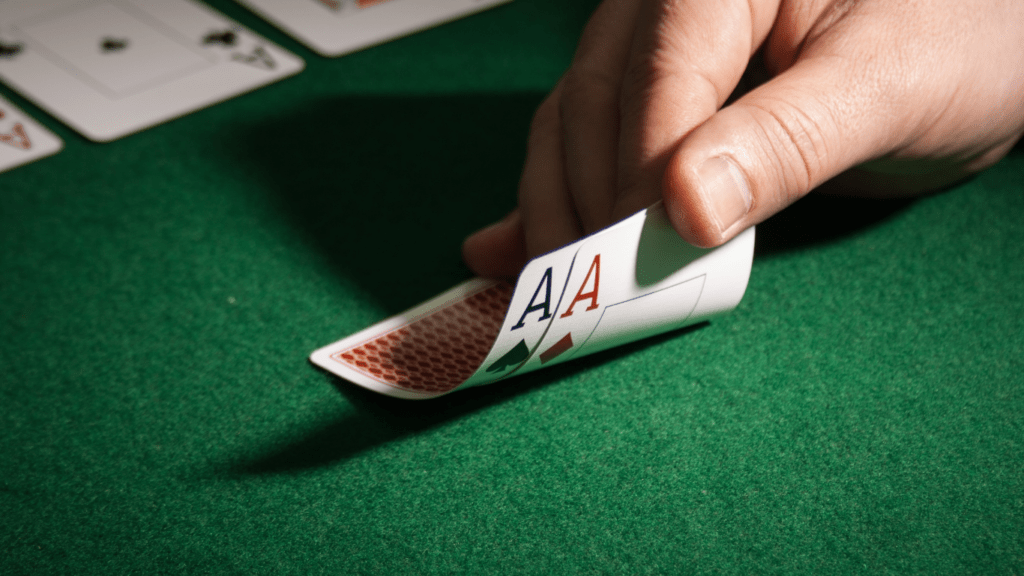Poker isn’t just about the cards you hold; it’s a battle of wits where bluffing can turn the tide in your favor. I’ve seen many players underestimate the power of a well-timed bluff, thinking it’s all about luck.
But mastering the art of deception can elevate your game and leave opponents second-guessing their every move. In this article, I’ll share insights on when to bluff and how to do it effectively. Understanding the psychology behind your opponents’ decisions and reading the table dynamics are crucial.
Whether you’re a novice or a seasoned player, honing your bluffing skills can be the key to outsmarting your competition and taking home the pot. Let’s dive into the strategies that can make you a formidable force at the poker table.
Understanding Poker Bluffing
Bluffing is an essential strategy in poker that involves deceiving opponents about the strength of one’s hand. Mastering this technique requires a deep understanding of both psychological aspects and common misconceptions surrounding bluffing.
The Psychology Behind Bluffing
Bluffing hinges on psychological tactics that exploit opponents’ perceptions. Players often react based on their beliefs about what constitutes a strong hand. I assess my opponents’ tendencies, looking for signs of weakness or uncertainty.
Body language, facial expressions, and betting patterns provide clues. Recognizing these cues allows me to shape my bluffing strategy effectively. Successful bluffing creates doubt, prompting opponents to fold superior hands.
Common Misconceptions About Bluffing
Many players misconceive bluffing as merely betting large amounts or overacting. It’s vital to note that effective bluffing requires a strategic approach rather than random aggression. Failing to understand the right situations can lead to costly mistakes.
Bluffing needs to fit the scenario—overusing it decreases credibility. Additionally, not every player can be bluffed; recognizing the types of opponents willing to fold is crucial. High-aggression players typically require stronger setups to fold than passive players. Understanding these misconceptions sharpens my ability to bluff effectively and convincingly.
When to Bluff in Poker
Knowing when to bluff can significantly alter the outcome of a poker game. Strategic bluffing enhances the ability to manipulate opponents and take control of the betting.
Recognizing the Right Moments
Bluffing thrives on timing. Consider bluffing in these situations:
- Weak Board Textures: Bluff when the community cards suggest low connectivity, making it plausible for you to represent a strong hand.
- Late Position: Bluff from late positions as opponents are more likely to fold due to uncertain hands.
- Unfolded Aggression: Bluff against passive opponents who show little resistance; they’re likely to fold to pressure.
- Improving Your Hand: If you draw closer to a strong hand, a bluff may mask weakness while setting a trap for unsuspecting opponents.
- Short Stacks: Target players with short stacks who might feel desperate and fold to avoid risking their tournament life.
Assessing Opponent Behavior
Opponent behavior reveals a lot about their hand strength. Watch for these indicators:
- Nervous Habits: Notice jitteriness or fidgeting, which often signals uncertainty. It’s a cue to apply pressure with a bluff.
- Inconsistent Betting Patterns: Players who suddenly change their betting behavior may represent a weak hand, prompting a bluff.
- Reactions to Flops: Assess initial reactions when the flop comes down. A lack of enthusiasm often indicates a weak hand.
- Timing: Pay attention to how long opponents take to make decisions. Quick calls often indicate strength, while hesitance may indicate weakness, allowing for a strategic bluff.
- Table Image: Factor in how opponents perceive you. If I maintain a solid image, my bluffs may carry more weight.
By mastering these moments and behaviors, I enhance my bluffing strategy, making it a powerful tool within my poker arsenal.
Techniques for Effective Bluffing
Mastering poker bluffing involves using specific techniques that enhance your chances of success. Understanding various bluff types and crafting a reliable table image plays a vital role in deceiving opponents.
Types of Bluffs
- Pure Bluff: I bet or raise without holding a strong hand. My goal is to force opponents to fold, particularly when the board shows few draws or strong hands.
- Continuation Bet (C-Bet): After raising pre-flop, I make a bet on the flop regardless of whether I improved my hand. This tells opponents I may still have a strong hand.
- Semi-Bluff: I bluff with a drawing hand, such as drawing to a straight or flush. If my opponents call, I still improve my chances by potentially hitting my draw.
- Stone-Cold Bluff: I commit a significant amount of chips to convince opponents I hold a strong hand. Timing and board texture should support this approach.
- Steal Bluff: I target blinds when in late position. I raise with a weak hand, aiming to win the pot pre-flop from cautious players in the blinds.
Building Your Table Image
Establishing a solid table image enhances my bluffing potential. A consistent image influences how opponents perceive my betting patterns and, consequently, their responses. Here are ways to build an effective table image:
- Play Tight or Loose: I can choose to play tight to appear strong or loose to create unpredictability. Changing my style signals variations in hand strength.
- Mix Up my Plays: I vary aggression levels, alternating between strong hands and bluffs. Surprise is crucial in ensuring opponents can’t read my moves accurately.
- Consistency Matters: I maintain a consistent betting pattern that aligns with the hands I play. An erratic pattern can arouse suspicion and reduce bluffing efficacy.
- Use Position to my Advantage: I leverage position to enhance my image. When acting last, I can represent more strength, making my bluffs more believable.
- Adjust Based on Opponents: I observe opponents’ reactions to my plays and adjust my image accordingly. If they perceive me as aggressive or passive, I can exploit this understanding when deciding to bluff.
Implementing these techniques helps improve my bluffing game, making it an indispensable part of my poker strategy.
Analyzing Successful Bluffing Strategies
Bluffing strategies in poker benefit from real-world examples and learning opportunities. I’ll examine case studies of significant bluffs and discuss how players can learn from their mistakes to refine their own techniques.
Case Studies of Notable Bluffs
Notable bluffs provide valuable insights into successful strategies.
- Chris Moneymaker at the 2003 WSOP: Moneymaker executed a remarkable bluff during the final hand of the tournament, representing a strong hand when he was essentially drawing dead. His ability to read his opponent’s tendencies and leverage his table image contributed to one of poker’s most famous victories.
- Phil Ivey’s Ace-High Bluff Against Daiyong Yu: Ivey bluffed with an ace-high hand in a high-stakes cash game. His pressure forced his opponent to fold a better hand. Ivey effectively studied Yu’s betting patterns, timing, and behavioral cues to identify the perfect moment for deception.
- Tom Dwan’s River Bluff: In a notable hand, Dwan placed a hefty bet on the river while holding a weak hand. His confidence and aggressive style led his opponent to fold a strong hand. Dwan’s use of table dynamics and understanding of opponent psychology crafted a successful bluff that potential players can emulate.
Learning from Mistakes
Mistakes in bluffing can be instructive if players analyze their outcomes critically.
- Over-Bluffing: Many players overestimate their ability to bluff. I’ve seen players fail after bluffing too frequently without considering their table image. Successful bluffers recognize the balance between bluffing and value betting, ensuring their actions align with perceived strength.
- Misreading Opponents: Misjudging an opponent’s tendencies can lead to costly bluffs. Imitating behavior without a comprehensive understanding can backfire dramatically. Analyzing past hands helps refine reading skills, allowing players to adapt their strategies effectively.
- Timing Issues: Bluffs in inappropriate situations often result in disaster. Ignoring board textures, opponent tendencies, and game dynamics disrupts profit potential. Evaluating previous hands proves crucial for adjusting future bluff attempts and recognizing situations that encourage deception.
- Inconsistent Table Image: A fluctuating image can confuse opponents and make bluffing less effective. I focus on maintaining a consistent strategy to establish credibility, making my bluffs more believable when executed. I analyze how other players perceive my actions to adjust my approach strategically.
Through these case studies and lessons, I can continually enhance my bluffing strategies and improve my overall poker game.


